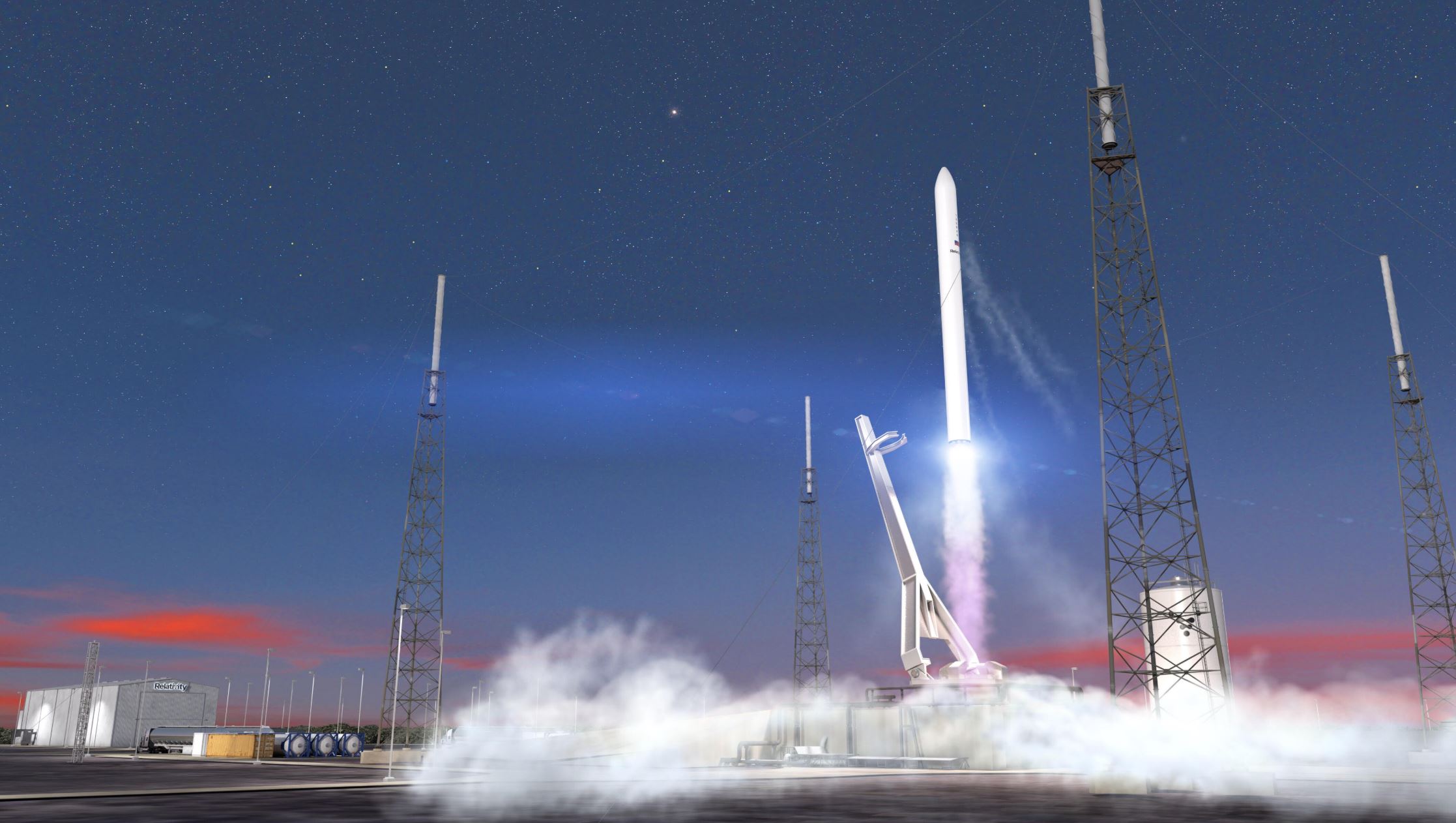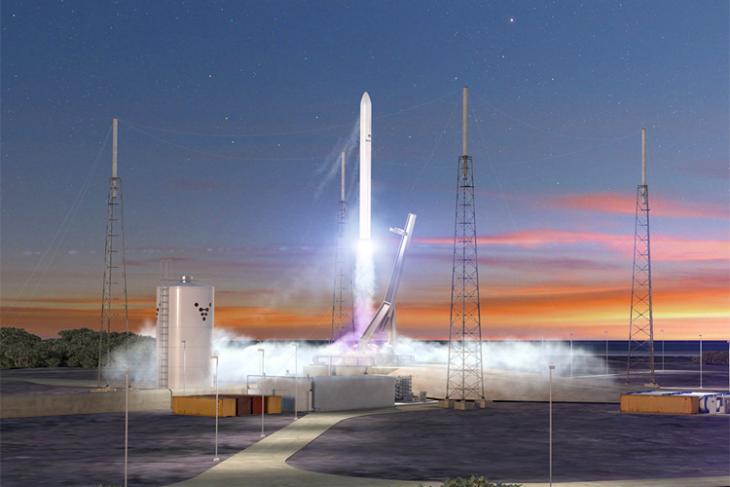
What Makes Relativity Space’s Terran 1 So Special?
As more companies continue to start and progress, we are seeing more ambitious and unique ideas. Relativity Space is a great example with its one of a kind manufacturing process among other things. While they have not yet launched a rocket, they are making good progress towards a first attempt. This includes Terran 1 and the company’s even more ambitious ideas for future launch vehicles such as Terran R.
Terran 1 is still a very special launch vehicle. While not very large, Relativity is working to create a practically fully 3D printed rocket. This includes the engines, body, and more. However, the Terran 1 launch vehicle is much more than just a 3D printed rocket. It features additional unique performance capabilities, launch services, construction, and more. All of which play an important role in the future success of Terran 1 and Relativity.
While what Relativity is attempting is risky, it could provide massive benefits. Specifically, if Relativity is successful with developing and manufacturing 3D printed rockets and more, it could cut costs and production times down a significant amount. These same benefits would allow them to launch much more than other companies within the industry. Here I will go more in-depth into some of the unique features of Terran 1.
Terran 1 Features

Terran 1 is an expendable two-stage launch vehicle powered by liquid natural gas (LNG) and liquid oxygen (LOX). Relativity designs, builds, and operates Terran 1 to provide customers with the most responsive and affordable small satellite launch service on the market. The Terran 1 vehicle is 35m in height by 2.3m in diameter and uses 10 Aeon engines. This includes nine Aeon-1 engines on the first stage, and one Aeon Vacuum engine on the second stage. Relativity prints all structures and major engine components using proprietary printable metal alloys, which leads to a dramatically simplified manufacturing process when compared to traditional fabrication methods. This will make it possible to shrink vehicle build and integration timelines down to just 60 days. The design of Terran 1 is intended to provide a predictable and controlled launch environment allowing for simplified payload design requirements. Terran 1 can support both industry-standard and custom interfaces, using commercially available adapter and separation hardware in addition to mission-specific designs. Environmental control systems maintain clean, thermally controlled payload environments. While the design and manufacturing process for Terran 1 is very unique, it also has interesting performance capabilities.
Terran 1 provides direct-injection and multi-burn launch services to a variety of target orbits, delivering as much as 1,500 kg into orbit. Relativity selects which launch site supports each mission based on customer-specified orbit requirements. Terran 1 is built for high injection accuracy, and the standard mission design includes trajectory and separation analyses as well as collision avoidance maneuvers and deorbit as required. Not only this, but Terran 1 is also capable of delivering to elliptical orbits which Relativity highlights. In terms of injection accuracy, the launch vehicle is designed to meet the 3-sigma injection accuracies for a standard mission. This includes plus or minus 15 kilometers for altitude, plus or minus 0.1 degrees of inclination, and plus or minus 0.2 degrees of RAAN. Before payload separation, Stage 2’s guidance, navigation, and control system orients itself and the payload to the customer-defined attitude and separation conditions. Stage 2 controls three-axis pointing and pre-separation spin stabilization to within 1 degree, second, or axis as required by mission design.
In order for launch vehicles to work properly and be extremely precise, they are equipped with a large host of avionics. Terran 1 has a single-string avionics system designed using a combination of flight-proven, off-the-shelf components, and in-house designs. The avionics system includes, but is not limited to, a flight computer, a global positioning system (GPS), inertial measurement unit (IMU), telemetry processor, custom data acquisition and vehicle control processors, high-speed sensor suite, batteries, and cameras. The avionics suite is duplicated on the test bench with a full hardware-in-the-loop (HITL) system to simulate full missions in order to exercise hardware, software, and algorithm performance in a test-like-you-fly environment. Relativity develops ground and flight software in-house and thoroughly exercises it using HITL tests prior to deployment to a flight vehicle. Not only this, but to maximize flexibility, the avionics system includes a bussed, modular infrastructure that makes it possible to rapidly add or subtract components to meet changing vehicle configurations. They designed the avionics system to leverage component and architecture commonality across both stages in order to reduce development time and simplify vehicle operations. They also designed vehicle components to be as accessible as possible, allowing for Relativity to quickly and unobtrusively make any necessary modifications late in the integration process. Their engineering team is considering vehicle reusability in the development roadmap and is making allocations in the current design for a fluid upgrade transition to reusability.
Another important feature revolves around a launch vehicle’s capability to secure and hold different types of payloads. The Terran 1 payload module consists of the payload attach fitting, payload, and fairing as an
assembly. The 3-meter payload fairing is a metallic, 2-piece clamshell design with a frangible axial seam, a tongue-in-groove radial joint at the base, pneumatic pushers to separate, and acoustic mitigation provided by acoustic blankets. The payload attach fitting is equipped with a 986 mm, or 38.8 in, payload interface and comes standard with a camera for views of payload separation on orbit. Payload integration and encapsulation occur in the vertical orientation followed by break over to horizontal to mate to Stage 2. While there is no payload access available following encapsulation as a part of the standard launch service, the Terran 1 payload module is designed to accommodate de-encapsulation in the case of launch delay or payload anomaly. All of which is designed to support foreign and domestic government and commercial satellite customers in launching their spacecraft to orbit. Standard launch services include program management, requirements management and verification, mission assurance and quality management practices, while also incorporating mission-specific nonstandard services as required. Whether the customers’ program requires unique payload accommodation, payload processing, program insight, or otherwise, Relativity’s team attempts to provide custom services inside a proven mission execution framework so you can focus on your mission. As time has gone on, Relativity has made some significant progress. They have not yet launched Terran 1 but are trying to perfect the unique manufacturing process. If successful it will allow them to quickly and consistently launch ambitious rockets such as Terran 1 and Terran R in the future.
Conclusion
A lot of different companies within the space industry are trying to reach orbit for the first time. Some use a more standard manufacturing process and rocket design. Relativity on the other hand is trying something very different. Specifically, Terran 1 not only features a primarily 3D printed design, but also unique performance capabilities along with general payload design, features, and more. If successful, it could benefit the company and the space industry in a significant way. However, the goal is very ambitious and not easy at all. We will have to wait and see what Relativity develops and the impact it has on manufacturing and the space industry in general.
